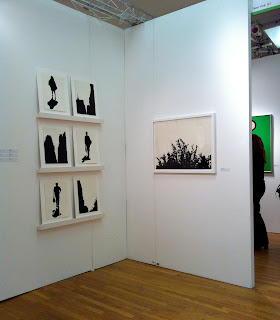 Bye Bye Kitty!!! Between Heaven and Hell in Contemporary Japanese Art
Bye Bye Kitty!!! Between Heaven and Hell in Contemporary Japanese Art, at the Japan Society, has received outstanding reviews already, so I won't recap them here. (Links are at the bottom of the blog and the catalog's essays are excellent.) This is an exhibition that puts paid to the easy simplifications of Japan's cult of cute (
kawaii), of which the Hello Kitty phenomenon is the slickest and cutest.
Bye Bye Kitty!!! recognizes Japanese artists born between the mid-1960's and the early 1980's, whose work looks deeply and thoughtfully at the imbalances in society and nature, and at our deepest fears, both real and imagined. The complex pen and ink drawings by Manabu Ikeda,
PixCell Elk #2 by Kohei Nawa, and Makoto Aida's print,
Harakiri Schoolgirls, have the strongest hold on me by far, but there is almost nothing in this show that I did not respond to positively. Though the catalog refers to previous earthquakes including Kobe in 1995, the terrible scenarios unleashed by the March earthquake, tsunami, and atomic disaster could not have been predicted to coincide with this exhibition. In fact they happened one week before the show's opening, and surely intensify its impact on viewers.
From the UN Plaza and the Japan Society, I headed west to Chelsea, where by contrast the vacuousness of certain Western artworks was more obvious this time than is usual. Robert Miller has a triple star show - drawings by Andy Warhol, postcard sculptures by Gilbert and George, and an installation by Yayoi Kusama. I generally like stopping in at Miller for looks back at recent art history, but this was a triple flop. Warhol's drawings could have been done by any talented highschooler, the G&G composites had all the appeal of video game screenshots, and - biggest disappointment - Kusama's installation (titled
Heaven and Earth and priced at an astonishing $1,000,000) consisted of 40 fabric covered boxes from which protruded 285 fabric forms reminiscent of tentacles. As a single installation set in its own seagreen space, it was devoid of the disorientation that I look for and like so much in her work.
Hyperallergic's Review
Blake Gopnik's review in The Daily Beast
PixCell Elk #2 via The Daily Beast






















